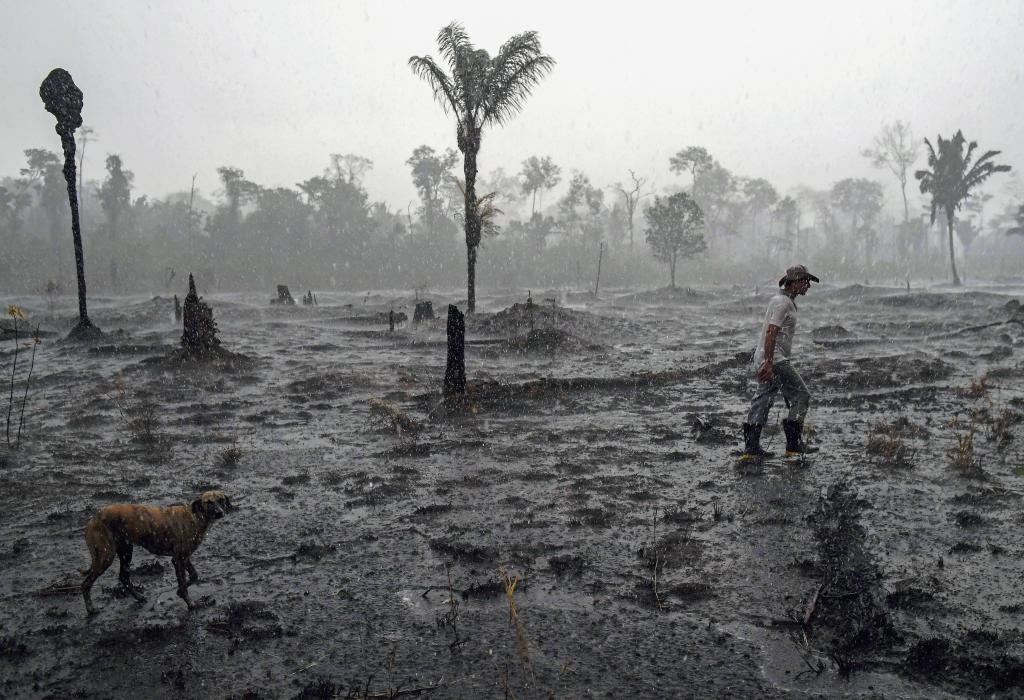It is pretty hard to know how many trees you had to burn of the 340 billion in Amazonia to shroud this hemisphere’s largest megacity, São Paulo, about 1,500 km from the Amazon, in enough smoke to completely darken its skies. But we do have some numbers on fires in Brazil (over 85,000) and Amazonia (close to 44,000 and climbing). The area that burned all over Amazonia since the beginning of the year nudges up to over 1.9 million ha (Brazil) and another 4 million in Bolivia, and it’s not done yet. We know that the number of fires was up 88% from the previous year thanks to Brazil’s remote sensing Institute for Spatial Research (INPE) whose director, Dr Ricardo Galvão, was fired for reporting this to Brazil’s right-wing president, Jair Bolsonaro. Other major South American cities such as Santa Cruz, Bolivia, and the large soybean entrepot of Porto Velho were also wheezing through darkness at noon with the unbreathable air, the explosion in hospital visits and newly asthmatic, choking children. This will be more or less the state of things until the heavier rains come at the end of the year.
The dramatic Amazon fires images were coming in a year of the hottest summer ever recorded, when Paris vied with Death Valley for the hottest spot on the planet for a few days (44°C), Fairbanks, Alaska, basked in 32°C heat, and Siberian fires blazed in the Arctic. The images of the vast burnings – a human arson on a more or less unthinkable scale – were dramatically visible from space, from drones and from distressing ground photos, which made the heat feel palpable, the apocalypse now. The immolated ecosystems swirled into the atmosphere to further bake more greenhouse gases into the sky, reducing its plants and animals to claggy dust.
The ghastly images soon triggered a geopolitical outcry. Brazilian President Jair Bolsonaro, his minister for the exterior, Ernesto Araújo, and US President Trump and Secretary of State Pompeo are all climate change deniers. They suddenly found that at the G7 meeting in France, Amazon burning had leapt, irritatingly, into an agenda item. Bolsonaro vaulted into action with his usual rebarbative comments. First, he refused the monies offered by the EU (22 million euros – actually a risible sum given the scale) because he felt that French President Macron had insulted him. Bolsonaro was, however, willing to take funds from Boris Johnson’s UK, happy to send in 44,000 troops to show his Amazon love and military bona fides. A bit later, Araújo and Pompeo agreed on a 100-million-dollar deal to “protect biodiversity” in the most remote areas of Amazonia, for which read mining and timber plunder by private business.
The Bolsonaro faction denied responsibility for the large-scale destruction, reverting to customary tropes and international conspiracy theories. They accused the international press of misrepresenting the process of deforestation as destruction rather than the gloss of Brazilian development. NGOs were blamed for setting the fires and then filming the ensuing holocaust in order to make the Bolsonaro regime look bad (Greenpeace and World Wildlife Fund could very soon be banned from Brazil). More sinister geopolitical strategies were evoked, including the limitation of imports of cheap Brazilian agricultural goods into Europe by backing out of MERCOSUR on specious environmental grounds. Inhibiting deforestation was meant to forever condemn Brazil to underdevelopment (a zombie nostrum revived from the earlier military time). Bolsonaro’s son, who enjoys the same nepotistic perks as members of the Trump family, would argue in the Brazilian congress that the US and Europe had in fact developed by plundering their forests, so who were they to tell Brazil what to do?
“Amazonia is ours”, bellowed Bolsonaro while articulating a view popular in military circles that environmentalists use indigenous people as stooges to threaten Brazilian sovereignty and the Christian Brazilian way of life. During his election campaign, Bolsonaro advocated amnesty for deforesters and timber thieves and vowed to open up indigenous and traditional people’s lands to mining, curtailing their rights inscribed in the 1988 constitution. Defending the agroindustrial ranchers and soy farmers as Amazon’s rightful territorial masters, he sought to eliminate Brazil’s environmental ministry, relax environmental law enforcement, and back out of the Paris climate accord.
What is the meaning or value of stewardship if you believe in the end times, as do Brazil’s Evangelical influencers, of which Bolsonaro is one? The general slogan that integrates his supporters, “Bibles, beef and bullets”, more or less sums up his coalitions: fundamentalist Christians, agroindustry and the military. Bolsonaro has de facto decriminalised land grabbing, which explains a great deal of the current calamity. In a manner similar to farm management services, landowners can contract mafias for social “cleansing” (limpieza in Portuguese), that is, running local farmers and natives off the land, hauling out the timber, cutting and burning what remains. Brazil’s agroelites were perfectly willing to burn up more than 40,000 species of plants to make a habitat for just one – soy – and to immolate a world of more than 100,000 different kinds of animals (an underestimate) to make space for another species – the cow. This would move our world from the Anthropocene – the Age of Man – to what biologist E.O. Wilson has called the Eremocene – the Age of Loneliness – as we preside over the sixth biodiversity extinction.
This article was published in the latest edition of Globe and in Global Challenges (no. 6, 2019), the Graduate Institute's series of research dossiers.
GENEVA GRADUATE INSTITUTE
Chemin Eugène-Rigot 2A
Case postale 1672
CH - 1211 Geneva 1, Switzerland
+41 22 908 57 00
ADMISSIONS
prospective@graduateinstitute.ch
+ 41 22 908 58 98
MEDIA ENQUIRIES
sophie.fleury@graduateinstitute.ch
+41 22 908 57 54
ALUMNI
carine.leu@graduateinstitute.ch
+ 41 22 908 57 55



